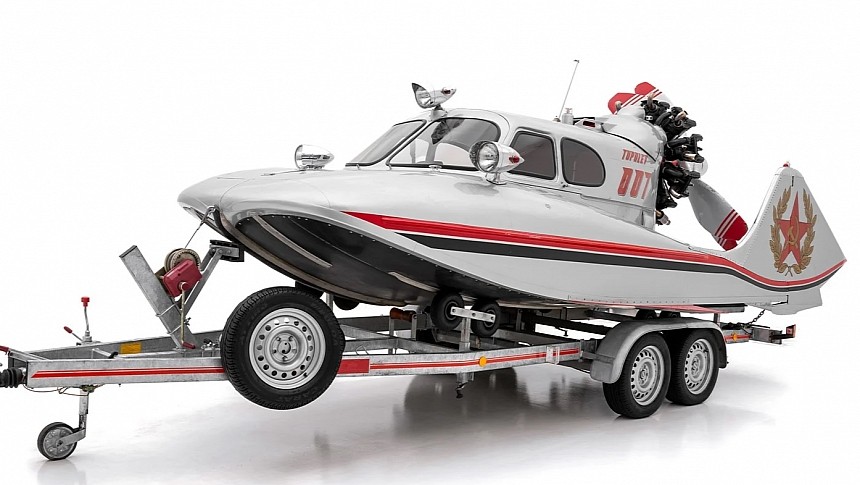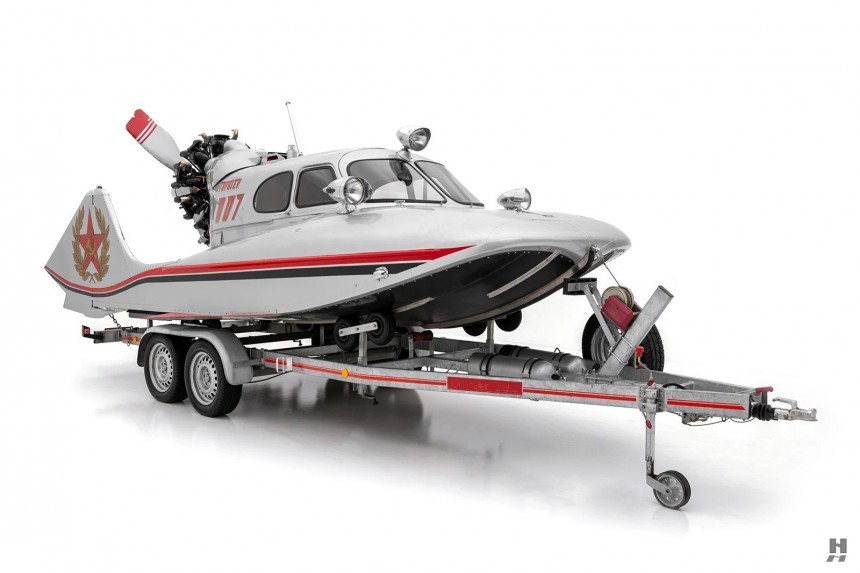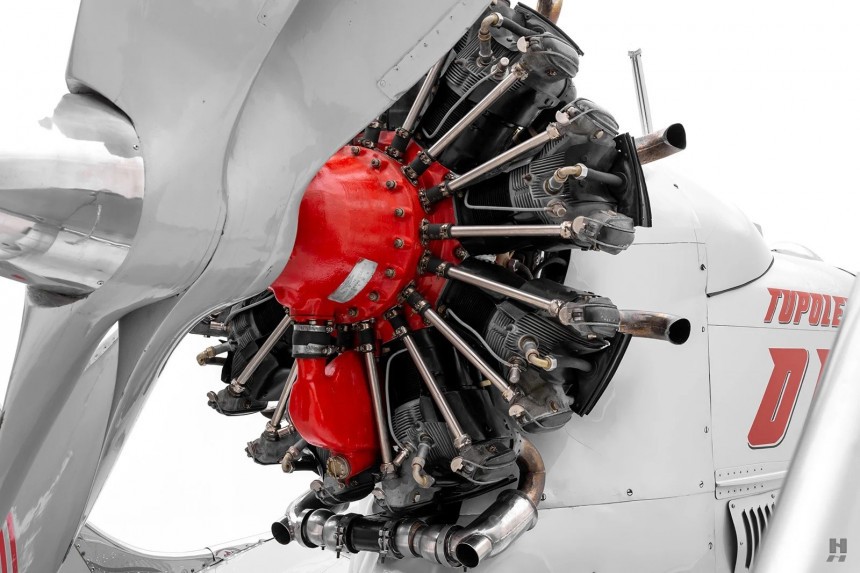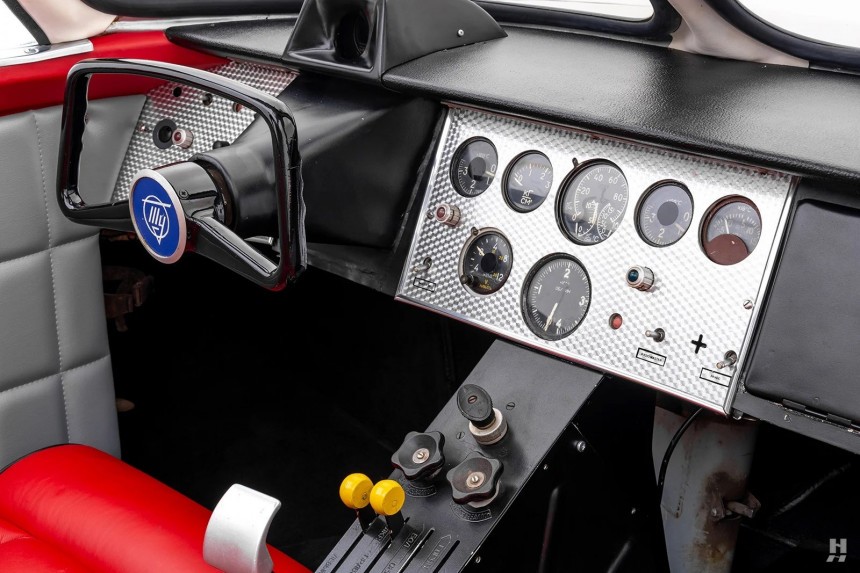Russia's harsh weather conditions, with plenty of snow in winter, thin ice in the spring and autumn, and numerous rainfall and vast areas of wetland in the short summers, make the depths of the country a tricky place to get around. And this has led to the development of some wacky, outlandish vehicles.
A curious contraption built to thread the vast, snow or ice-covered eastern wilderness is the Tupolev A-3 Aerosledge. This all-metal, aluminum-bodied amphibious aerosledge was developed in the 1960s, during the Cold War era, when the Soviet Union was in need of new transportation solutions to help them face the challenging winter conditions in the Russian outback where roads were either non-existent or covered by snow.
During the decades-long Cold War, the Soviets faced a lack of resources and technology, but instead, they had very ingenious engineers who got very creative with their vehicle-building techniques.
The Tupolev A-3 Aerosledge, officially known as the"Nadezhda" (which means "Hope" in Russian), was produced from 1964 through 1983, with a design derived from a class of vehicles known locally as aerosani - amphibious propeller-driven snowmobiles that slide on runners or skis.
However, the Soviet engineers took things a bit further with this unusual-looking machine. It is neither aircraft nor snowmobile, hovercraft, or seaplane. It is pretty unique, combining elements from all of the above, with its body looking more like a speedboat mated with a light airplane.
The Tupolev Design Bureau, known for its aviation contributions, was responsible for designing this vehicle, which combines the principles of both ground and air transportation. At its core, the A-3 Aerosledge was a ground effect vehicle (GEV), a distinct category of vehicles that are a phenomenon unto themselves. These vehicles are known to be more efficient than normal aircraft and faster than boats, as they operate by leveraging the aerodynamic interaction between the moving wing and the ground at very low altitudes. They are designed to glide over a level surface, including ice, snow, and bodies of water.
Tasked with transporting passengers, mail, and light freight to remote and often isolated areas of the former URSS, the A-3 Aerosledge was designed as a versatile utility vehicle capable of navigating snow, water, and ice and made quite a sight cruising the frozen rivers of Siberia. A few examples were used for military applications, to collect crashed pilots or cosmonauts who happened to land in a snow-bound, frozen area, for instance.
Besides the aluminum body that helps keep weight down, the A-3 also has double plating on the bottom to resist damage and a layer of low-friction polyethylene on the underside that allows it to glide over any flat surface, including water, snow, marsh, and tundra. Twin gull-wing doors offer access inside the cabin, where there is space for a driver and four passengers.
The vehicle measures 13 feet in length and 7 feet in width, while the payload is 1,433 pounds (649 kg) over snow or ice and 661 pounds (299 kg) over water.
Power came from a single radial piston engine mounted on the roof behind the enclosed cabin and a propeller in a pusher configuration. While early models were equipped with a 100-hp five-cylinder radial engine, later models were upgraded to a 260-hp nine-cylinder radial engine sourced from light aircraft.
The setup provided ample thrust without relying on contact with the ground through wheels or tracks. At speeds over 50 mph or 81 kph, it generates lift, allowing it to hover over the surface. The machine was capable of traveling at speeds of up to 75 mph (120 kph), which made it faster than most ground-based transport options that could tackle harsh Siberian winters back then.
Two large rear rudders handle steering of the A-3 by channeling airflow from the propeller left and right to provide directional control. These rudders can be controlled via a steering wheel inside the cabin.
More than 800 units of the Tupolev A-3 Aerosledge were manufactured, but very few original examples are still in existence today. The unit you see in this article is one of them, and it has been fully restored in Germany after being extradited from the USSR during perestroika.
Its body parts were comprehensively restored by hand by a German specialist, while the engine was rebuilt in Bacau, Romania. This particular example benefitted from a significant upgrade that makes it mightier than its siblings - a Vedeneyev M14P air-cooled, supercharged 9-cylinder radial aircraft engine with a displacement of 10.16 liters. It is able to produce 360 horsepower and is mated to twin counter-rotating propellers.
This fully restored Tupolev A-3 Aerosledge is now located in the USA and has even won the Corinthian Award at the Keels and Wheels Concours d'Elegance in Houston in 2006. Very few units are known to have made it to the United States, which makes them highly coveted among collectors of unusual vehicles.
Perched on a matching trailer fitted with dual compressed air tanks for starting the engine, this 1970 Tupolev A-3 Aerosledge unit is currently offered for sale via Hyman Ltd. The asking price is $209,500 USD.
Despite its potential, the amphibious A-3 Aerosledge remained a niche solution even back in the day. Over time, the role of such vehicles has been taken by more efficient aircraft and tracked vehicles able to tackle challenging terrain, but few are as cool-looking as this one.
During the decades-long Cold War, the Soviets faced a lack of resources and technology, but instead, they had very ingenious engineers who got very creative with their vehicle-building techniques.
The Tupolev A-3 Aerosledge, officially known as the"Nadezhda" (which means "Hope" in Russian), was produced from 1964 through 1983, with a design derived from a class of vehicles known locally as aerosani - amphibious propeller-driven snowmobiles that slide on runners or skis.
However, the Soviet engineers took things a bit further with this unusual-looking machine. It is neither aircraft nor snowmobile, hovercraft, or seaplane. It is pretty unique, combining elements from all of the above, with its body looking more like a speedboat mated with a light airplane.
Tasked with transporting passengers, mail, and light freight to remote and often isolated areas of the former URSS, the A-3 Aerosledge was designed as a versatile utility vehicle capable of navigating snow, water, and ice and made quite a sight cruising the frozen rivers of Siberia. A few examples were used for military applications, to collect crashed pilots or cosmonauts who happened to land in a snow-bound, frozen area, for instance.
Besides the aluminum body that helps keep weight down, the A-3 also has double plating on the bottom to resist damage and a layer of low-friction polyethylene on the underside that allows it to glide over any flat surface, including water, snow, marsh, and tundra. Twin gull-wing doors offer access inside the cabin, where there is space for a driver and four passengers.
Power came from a single radial piston engine mounted on the roof behind the enclosed cabin and a propeller in a pusher configuration. While early models were equipped with a 100-hp five-cylinder radial engine, later models were upgraded to a 260-hp nine-cylinder radial engine sourced from light aircraft.
The setup provided ample thrust without relying on contact with the ground through wheels or tracks. At speeds over 50 mph or 81 kph, it generates lift, allowing it to hover over the surface. The machine was capable of traveling at speeds of up to 75 mph (120 kph), which made it faster than most ground-based transport options that could tackle harsh Siberian winters back then.
Two large rear rudders handle steering of the A-3 by channeling airflow from the propeller left and right to provide directional control. These rudders can be controlled via a steering wheel inside the cabin.
More than 800 units of the Tupolev A-3 Aerosledge were manufactured, but very few original examples are still in existence today. The unit you see in this article is one of them, and it has been fully restored in Germany after being extradited from the USSR during perestroika.
This fully restored Tupolev A-3 Aerosledge is now located in the USA and has even won the Corinthian Award at the Keels and Wheels Concours d'Elegance in Houston in 2006. Very few units are known to have made it to the United States, which makes them highly coveted among collectors of unusual vehicles.
Perched on a matching trailer fitted with dual compressed air tanks for starting the engine, this 1970 Tupolev A-3 Aerosledge unit is currently offered for sale via Hyman Ltd. The asking price is $209,500 USD.
Despite its potential, the amphibious A-3 Aerosledge remained a niche solution even back in the day. Over time, the role of such vehicles has been taken by more efficient aircraft and tracked vehicles able to tackle challenging terrain, but few are as cool-looking as this one.


























